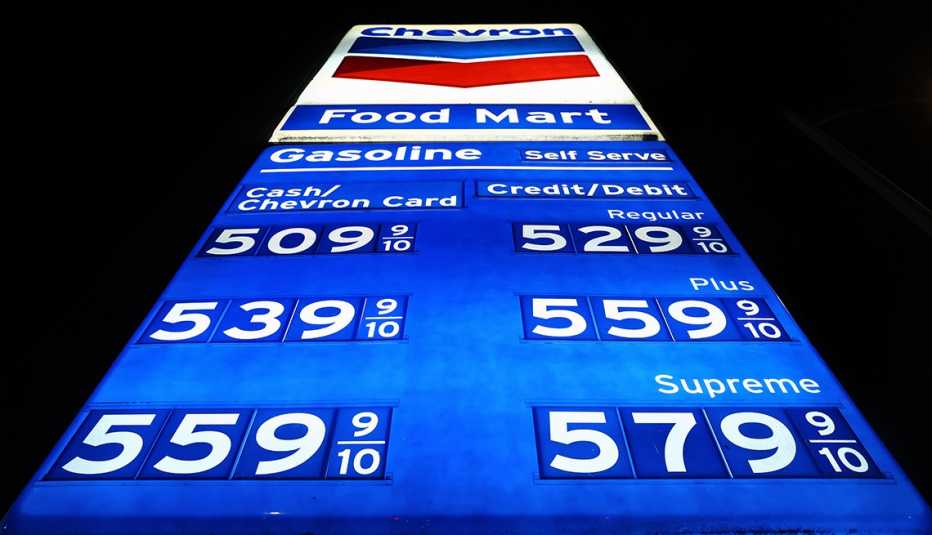AARP Hearing Center
The Consumer Price Index (CPI), the government’s main gauge of inflation, rose a staggering 9.1 percent in June from where it stood a year earlier, according to the Bureau of Labor Statistics (BLS).
You may have noticed that during the recent bout of inflation, prices have risen quickly — to the point where a gallon of gas could jump up 10 cents or more each day. You may also have noticed that gas prices inch down very, very slowly.
Economists have a term for this: “rockets and feathers.” Prices often soar like a rocket and flutter down like a feather. And the prices of some things — typically labor-intensive bills like auto repair — never seem to fall at all. Why is this, and what bills can we expect to fall very slowly, or perhaps never?
Rockets and feathers
Economists like to use gas prices as an example of the rockets and feathers phenomenon, in part because people see gas prices nearly every day, and because the price of gasoline largely tracks the price of oil. Crude oil prices account for 59 percent of the cost of a gallon of gas. By and large, oil and gas prices go in the same direction — but gas prices go up more quickly and down more slowly.
Here’s an example. The average price of regular gasoline started the year at $3.15, according to the Federal Reserve. It peaked at a record $5.02 a gallon on June 14, according to AAA, a 60 percent increase. The price of a barrel of oil increased 56 percent from the start of the year to its March 8 peak of $123.64. Rockets!
A barrel of oil has seen its price tumble to $104.09, a 19 percent decline. Gasoline? Down 7 percent. Feathers.
Why the lag? Three reasons, in the case of gasoline.
- Demand. “July is brisk for demand,” says Tom Kloza, global head of energy analysis for the Oil Price Information Service. “People feel as though they’re entitled to take vacations, whether they need to pay, you know, $5 a gallon or not.”
- Air travel. As thousands of flights get canceled each day, driving has become more and more attractive to travelers. “It’s a nightmare,” Kloza says. People will consider driving 800 miles before having to endure long lines at the airport and delayed flights.
- Opportunity. For the energy companies, that is. “Say you’re running a hoagie shop in a vacation area,” Kloza says. “And all of a sudden prices for meat and cheese and bread fall 20 percent. But it’s July and it’s high season. There’s no compelling reason to cut prices. You make hay while the sun shines.”
Flexible vs. sticky prices


Economists call the price of some goods and services “flexible,” meaning they can move up and down a lot, while others, like water, sewer and trash collection services, are “sticky.” They just don’t change often. (And when they do, they tend not to go back down.) Here are the five most flexible components of the Consumer Price Index, according to the Federal Reserve Bank of Atlanta:



































































